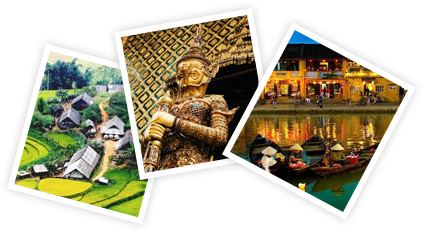Are you finding spots with the best mountains in Vietnam? Lucky for you, Vietnam’s mountainous landscapes offer some of Asia’s most spectacular hiking and trekking experiences. From the rugged peaks of the north to the spiritual heights of the south, each mountain tells its own story of natural beauty and cultural heritage. Are you ready to explore these spots?
Does Vietnam Have Mountains?
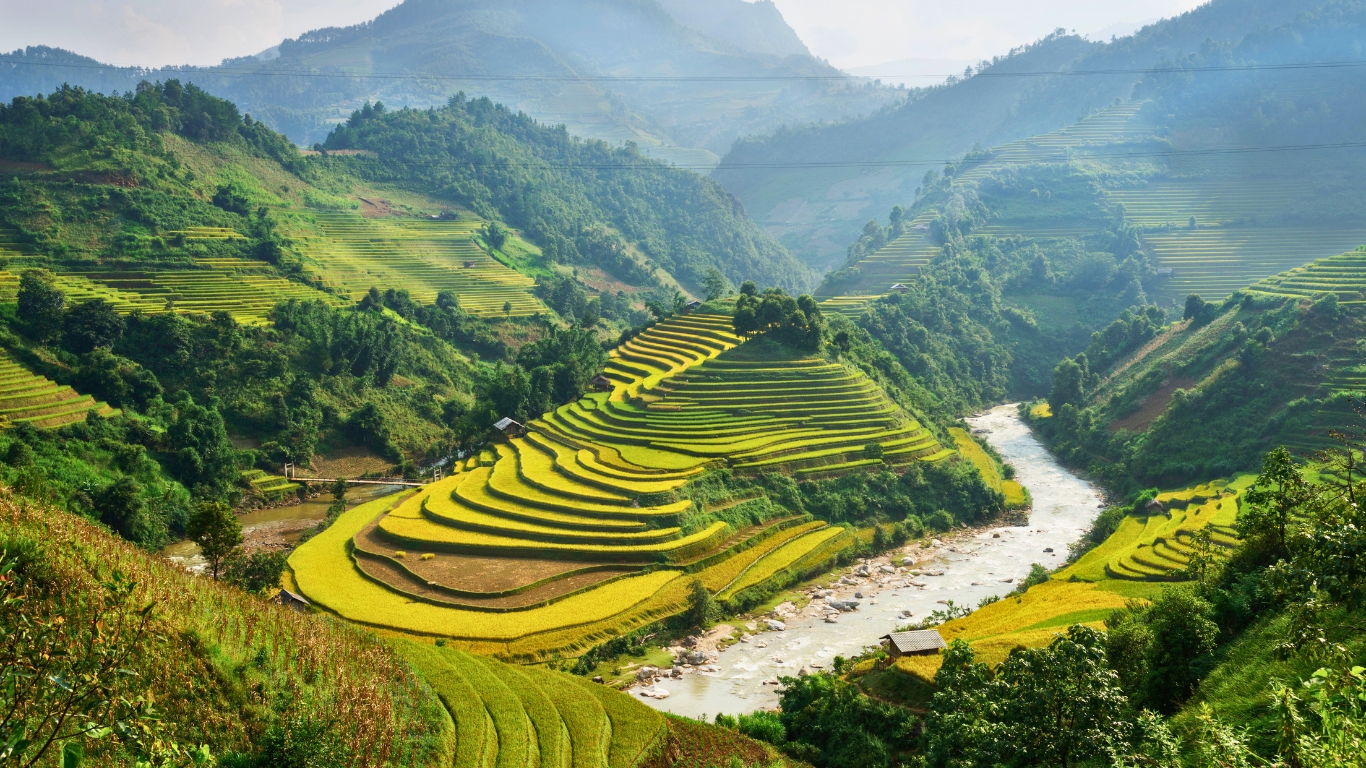
Vietnam is home to an extensive network of mountain ranges that stretch across the country, with dramatically different characteristics from north to south. The country’s topography is dominated by mountains, which make up approximately 40% of its land area.
If from north to south in Vietnam, you will find the majestic limestone karsts of northern Vietnam rise dramatically, their sharp peaks contrasting with the softer, rolling hills of the central highlands, which eventually transition into the serene terraced rice fields of the south, highlighting a stunning and diverse landscape that evolves beautifully from one region to the next.
Northern Mountain Ranges
The northern region hosts Vietnam’s most dramatic mountain scenery, characterized by:
- Hoang Lien Son range, featuring the country’s highest peak
- Limestone karst formations create spectacular landscapes
- Cool climate with four distinct seasons
- Average elevation: 1,600-3,000 meters
- Rich biodiversity and ethnic minority cultures
- Best known for rice terraces and cloud forests
Central Mountain Ranges
The central with marvelous highlands. The highlight is the Central Highlands (Tay Nguyen) offer:
- Extensive plateau regions
- Volcanic soil perfect for coffee cultivation
- Tropical monsoon climate
- Average elevation: 500-1,500 meters
- Dense pine forests and waterfalls
- Home to numerous ethnic minority groups
Southern Mountain Ranges
Different from the wild and off-beat landscape in the North Mountains, Southern Vietnam’s mountains are characterized by the:
- Lower elevations compared to the north
- Tropical climate year-round
- Average elevation: 300-1,000 meters
- Religious significance with many temples
- Accessible hiking trails
- Rich in folklore and historical sites
What are the Best Mountains in Vietnam from North to South?
From challenging peaks to spiritual journeys, Vietnam’s mountains offer diverse experiences for every type of traveler. Below are the best mountains in Vietnam from North to South, let’s hop on this trekking route with Indochina Voyages to discover each spot:
1. Fansipan Mountain – The Highest Mountain Peak in Vietnam
- Location: Sapa, Lao Cai Province
- Height: 3,143 meters
- Suitable for: Experienced hikers and adventure seekers
- Best time to visit: September to March
- Perfect Experiences: Hiking, photography, cable car rides
- Budget: $50-150/day (including accommodation in the Sapa Town)
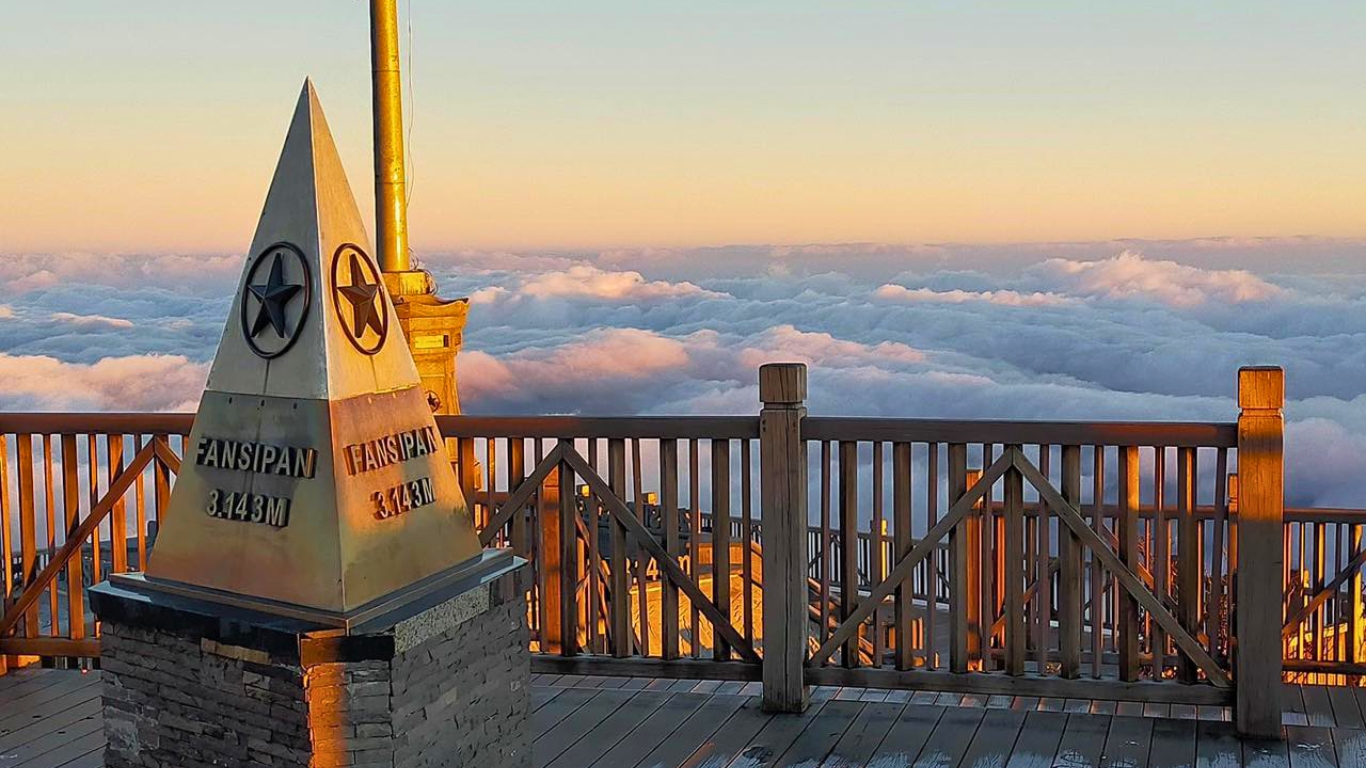
Known as the “Roof of Indochina,” Fansipan offers Vietnam’s ultimate mountain experience. The mountain features dramatic landscapes with cloud-covered peaks and stunning valley views. While traditionally a challenging 2-3 day trek, the modern cable car system makes the summit accessible to all visitors.
If choosing to experience the cable car to get to Fansipan, you will need about USD $32 for the round trip between Hoang Lien Station and Fansipan Station. You can buy the ticket online or through tour companies. However, this cable car will not take you directly from the ground to the peak, you still need to hike for around 15-20 minutes to get to the peak. The trail is easy to walk with steps so enjoy the views as you hike.
Travel Tips:
- Book cable car tickets in advance during peak season
- Bring warm clothing as temperatures can drop below freezing
- Consider hiring a local guide for cultural insights
- Start early to avoid afternoon clouds
2. Ha Giang Loop – The New Adventure for Mountain Seekers
- Location: Ha Giang Province
- Height: Various peaks up to 1,500 meters
- Suitable for: Motorcyclists and photography enthusiasts
- Best time to visit: March-April or September-October
- Perfect Experiences: Motorbiking, photography, cultural immersion
- Budget: $30-80/day
Not like the other mountains, the Ha Giang Loop is a captivating motorcycle circuit that winds through the stunning mountainous region of Ha Giang in northern Vietnam, close to the Chinese border. Spanning approximately 300 kilometers, this route typically takes 3 to 5 days to complete.
Riders are treated to breathtaking landscapes, including lush rice terraces, dramatic canyons, serene pine forests, and striking limestone karsts. Along the way, they can immerse themselves in the rich culture of ethnic minority villages and visit a UNESCO World Heritage Site, making it an unforgettable adventure.
However, besides riding the motorbike, you also choose a private car to get through the Ha Giang Loop and enjoy this adventurous and unique experience.
Travel Tips:
- Obtain proper motorcycle licenses and insurance
- Some boutique tour companies in Vietnam also provide private tours with private cars for you to explore
- Plan for 3-4 days to complete the loop comfortably
- Stay in local homestays for authentic experiences
- Check weather forecasts as roads can be dangerous in rain
>> Read more about Ha Giang: Ha Giang Vietnam – An alternative to Sapa
3. Pu Si Lung Mountain – One of the Tallest Vietnamese Mountains
- Location: Lai Chau Province
- Height: 3,076 meters
- Suitable for: Advanced hikers and mountaineers
- Best time to visit: October to March
- Perfect Experiences: Technical climbing, wilderness camping, photography
- Budget: $40-100/day
Pu Si Lung stands as Vietnam’s third-highest peak, offering a challenging expedition for serious mountaineers. This remote mountain provides pristine wilderness experiences with virtually untouched landscapes and rich biodiversity. The trek involves navigating through dense forests and steep terrain, making it one of Vietnam’s most challenging climbing experiences.
Travel Tips:
- Permits required for climbing
- Essential to hire experienced local guides
- Minimum 3-4 days needed for summit attempt
- Bring all necessary camping equipment
- Emergency satellite communication recommended
4. Lao Than Mountain
- Location: Lao Cai Province
- Height: 2,860 meters
- Suitable for: Intermediate to advanced hikers
- Best time to visit: September to November
- Perfect Experiences: Cloud hunting, sunrise viewing, camping
- Budget: $35-80/day
Known as the “King of Cloud Hunting,” Lao Than Mountain offers spectacular opportunities to witness seas of clouds and magical sunrises. The mountain features unique rock formations and provides panoramic views of the Hoang Lien Son range.
Travel Tips:
- Book local homestays in advance
- Start hiking early for best cloud views
- Bring warm sleeping bags for camping
- Pack light but adequate rain protection
- Consider hiring porters for equipment
5. Pu Luong
- Location: Thanh Hoa Province
- Height: 1,700 meters
- Suitable for: Nature lovers and cultural explorers
- Best time to visit: September to May
- Perfect Experiences: Rice terrace hiking, village visits, waterfall swimming
- Budget: $30-70/day
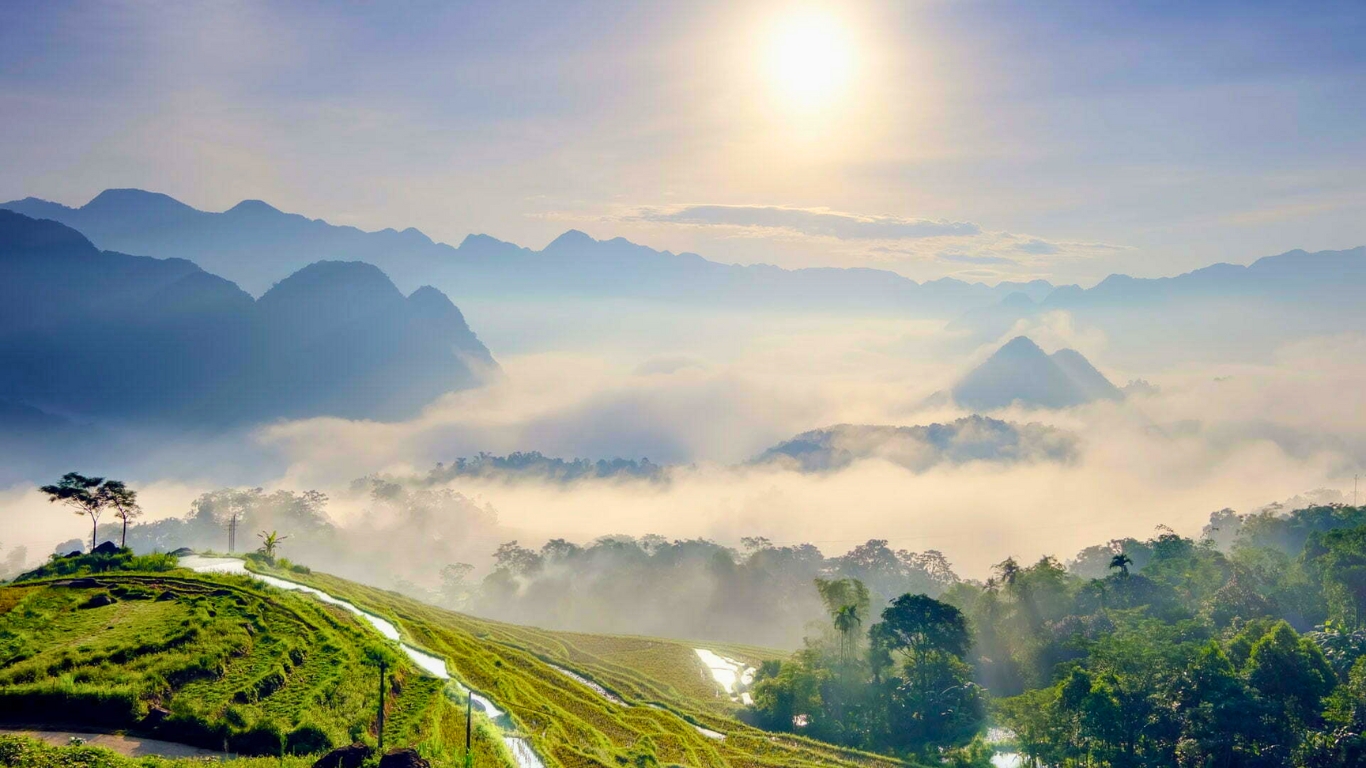
Pu Luong Nature Reserve combines stunning mountain landscapes with rich cultural experiences. The area is famous for its terraced rice fields, traditional stilt houses, and authentic Thai ethnic minority villages. The mountain offers various hiking trails suitable for different fitness levels.
Travel Tips:
- Stay in local stilt house homestays
- Try traditional bamboo water wheel activities
- Book guided village tours
- Support local handicraft workshops
- Try local Thai cuisine
>> Read more about Pu Luong: Pu Luong Travel Guide: A Vietnam Hidden Gem for Nature Lovers
6. Bach Ma Mountain – One of the Major Mountains in Vietnam
- Location: Thua Thien Hue Province
- Height: 1,450 meters
- Suitable for: Nature enthusiasts and history buffs
- Best time to visit: February to September
- Perfect Experiences: Wildlife watching, waterfall hiking, historical sites
- Budget: $45-90/day
Bach Ma Mountain, located within Bach Ma National Park, offers a unique blend of colonial history and natural beauty. The mountain was once a French hill station and now serves as a biodiversity hotspot with over 2,000 plant species and numerous rare animals.
Travel Tips:
- Visit Do Quyen waterfall during blooming season
- Explore abandoned French villas
- Book park guide for wildlife spotting
- Prepare for sudden weather changes
- Visit early morning for best wildlife viewing
>> Read more about Bach Ma: Bach Ma National Park Hue: Complete Travel Guide for Adventure Experiences
7. Vietnam Marble Mountains
- Location: Da Nang City
- Height: 106 meters
- Suitable for: Culture enthusiasts and easy hiking
- Best time to visit: February to July
- Perfect Experiences: Cave exploration, pagoda visits, rock climbing
- Budget: $25-60/day
The Marble Mountains comprise five limestone outcrops named after natural elements. Each mountain contains numerous caves and tunnels featuring Buddhist sanctuaries. The site offers easy hiking with rewarding views of Da Nang city and the coast.
Travel Tips:
- Visit early morning to avoid crowds
- Wear appropriate temple attire
- Take elevator up if needed
- Bring flashlight for cave exploration
- Visit local stone carving villages
8. Lang Biang Mountain
- Location: Da Lat, Lam Dong Province
- Height: 2,167 meters
- Suitable for: Family trips and intermediate hikers
- Best time to visit: December to March
- Perfect Experiences: Jeep tours, hiking, camping, flower viewing
- Budget: $35-75/day
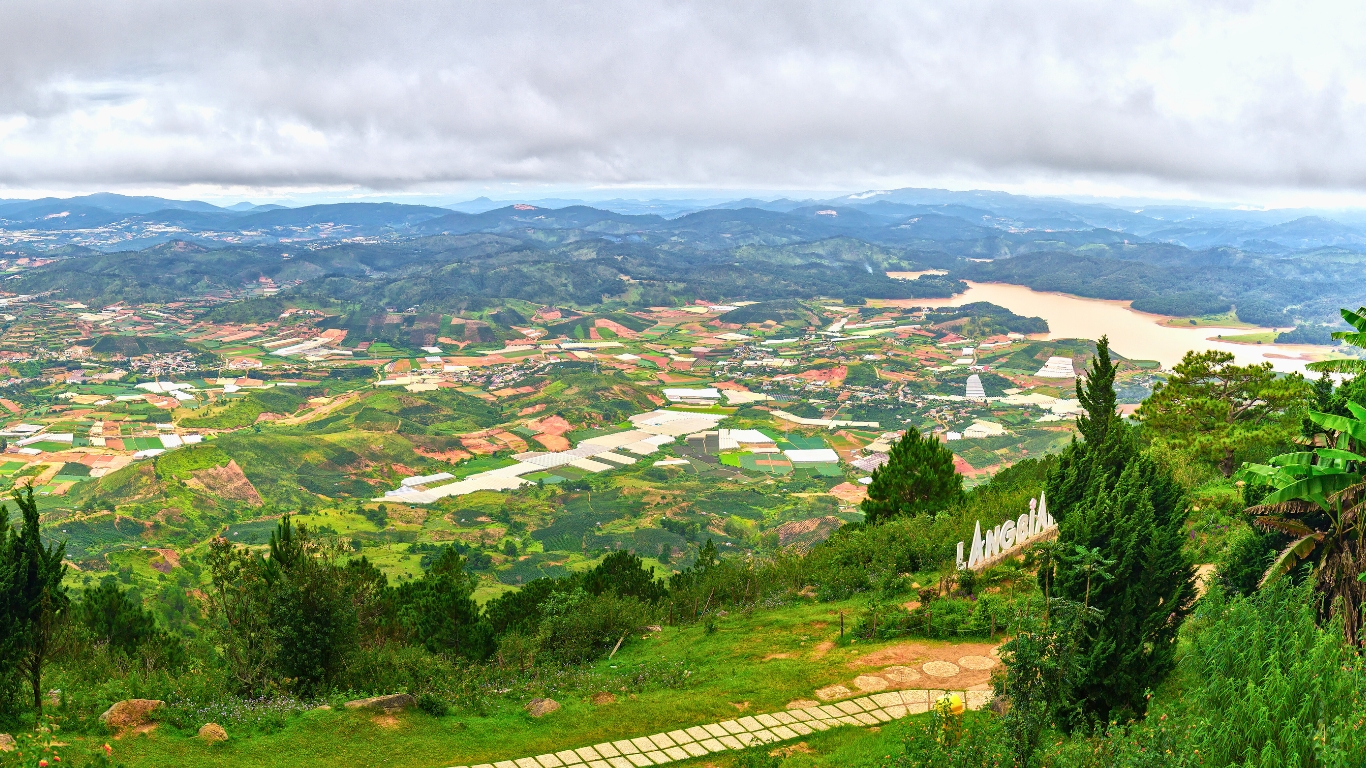
Lang Biang Mountain offers both challenging hiking trails and comfortable jeep tours. The mountain provides spectacular views of Da Lat city and surrounding flower farms. It’s particularly famous for its pine forests and cool climate year-round.
Travel Tips:
- Choose between hiking or jeep tours
- Visit early for clearest views
- Pack warm clothes even in summer
- Try local K’Ho ethnic cuisine
- Book camping permits in advance
9. Ba Den Mountain – Among the Most Famous Vietnamese Mountains
- Location: Tay Ninh Province
- Height: 986 meters
- Suitable for: Religious pilgrims and casual hikers
- Best time to visit: November to March
- Perfect Experiences: Temple visits, cable car rides, rock climbing
- Budget: $30-65/day
Ba Den Mountain, known as the “Black Virgin Mountain,” combines religious significance with natural beauty. The mountain features numerous temples and pagodas, making it a popular pilgrimage site. Modern cable car systems make it accessible to all visitors.
Travel Tips:
- Visit during non-festival times to avoid crowds
- Try local specialties at the base
- Take cable car for easier access
- Respect religious sites
- Bring offerings if visiting temples
10. Ta Cu Mountain
- Location: Binh Thuan Province
- Height: 649 meters
- Suitable for: Buddhist pilgrims and casual tourists
- Best time to visit: December to April
- Perfect Experiences: Religious site visits, cable car rides, hiking
- Budget: $25-55/day
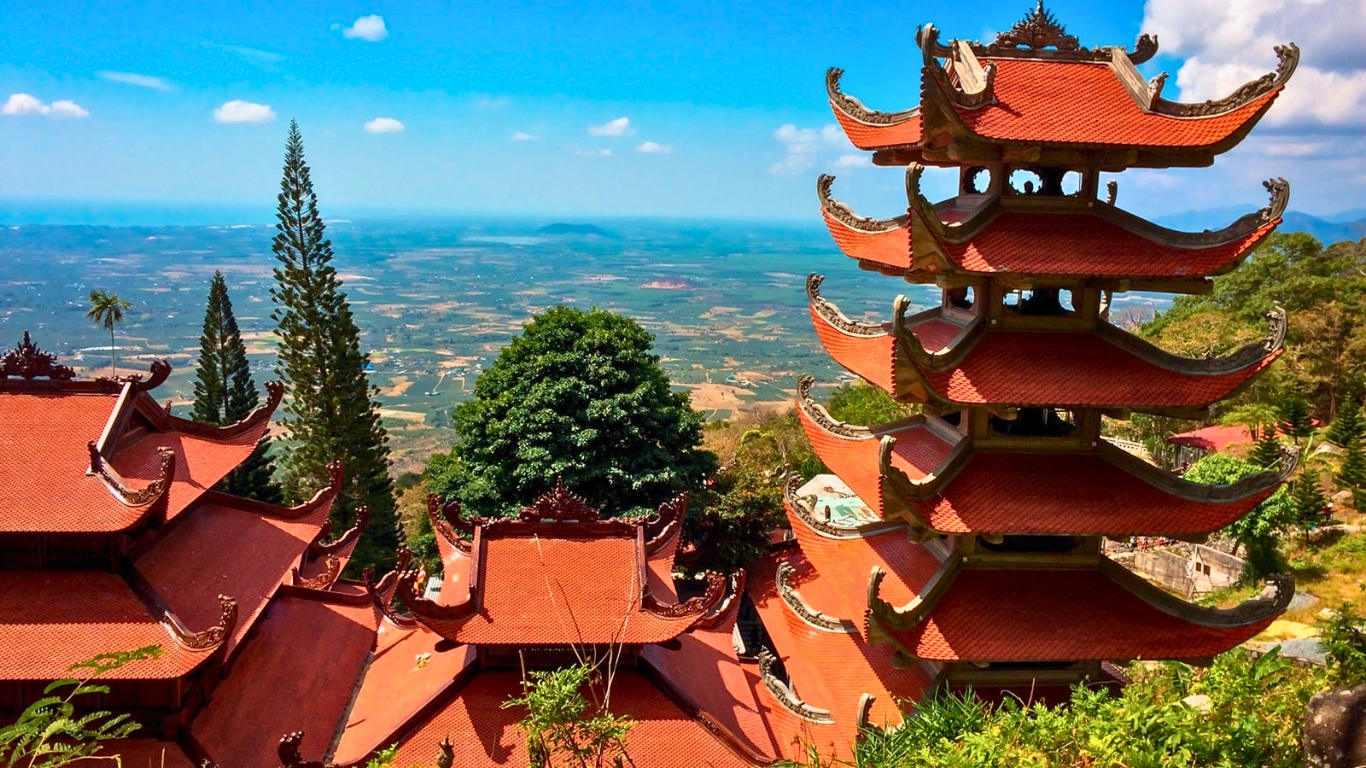
Ta Cu Mountain is famous for its giant reclining Buddha statue and ancient temples. The mountain offers both hiking trails and cable car access, making it suitable for various fitness levels. The summit provides beautiful views of the surrounding countryside and coast.
Travel Tips:
- Visit early morning for best photos
- Combine with nearby beach visits
- Respect temple dress codes
- Try local dragon fruit
- Book round-trip cable car tickets
11. Sam Mountain
- Location: An Giang Province, Mekong Delta
- Height: 284 meters
- Suitable for: Easy hiking and cultural exploration
- Best time to visit: December to April
- Perfect Experiences: Sunset viewing, temple visits, border views
- Budget: $20-50/day
Sam Mountain, while modest in height, offers cultural significance and beautiful views of the Mekong Delta and neighboring Cambodia. The mountain features numerous temples and pagodas, making it an important religious site.
Travel Tips:
- Time visit for sunset
- Explore Tay An ancient pagoda
- Try local palm sugar treats
- Visit during non-festival times
- Combine with Chau Doc city visit
Extra Travel Tips for Hiking
When hiking in the mountainous regions of Vietnam, proper preparation is essential to ensure a safe and enjoyable experience. Understanding the local weather patterns helps you anticipate sudden changes, while physical readiness enhances your ability to navigate the terrain. Additionally, being culturally aware not only enriches your journey but also fosters respect for the communities you encounter. Here are some extra travel tips to keep in mind:
Weather Preparation
- Check seasonal weather patterns: Familiarize yourself with the region’s climate to plan your hike during the most favorable conditions.
- Pack appropriate gear: Be ready for sudden weather changes by including layers, thermal clothing, and sun protection.
- Bring waterproof equipment: Essential during the monsoon season, pack waterproof bags, covers, and rain gear to keep your belongings dry.
Physical Preparation
- Train for higher altitudes: Gradually acclimate your body to higher elevations to minimize the risk of altitude sickness.
- Bring basic first aid supplies: Include items like band-aids, antiseptics, pain relievers, and any personal medications.
- Stay hydrated: Carry enough water and invest in water purification methods like filters or tablets to ensure safe drinking water.
Cultural Awareness
- Respect local customs and dress codes: Dress modestly and observe local traditions to show respect for the communities you visit.
- Learn basic Vietnamese phrases: Knowing simple greetings and expressions can enhance interactions with locals.
- Support local communities: Engage in responsible tourism by purchasing local goods and services, which helps sustain the local economy.
FAQs
Does Vietnam have mountains?
Yes, Vietnam has extensive mountain ranges running through the country, with the highest peak being Fansipan at 3,143 meters.
Are there mountains in southern Vietnam?
Yes, southern Vietnam has several notable mountains, including Ba Den Mountain (986m), Ta Cu Mountain (649m), and Sam Mountain (284m). While lower than their northern counterparts, these mountains are significant for their religious and cultural importance.
What is the French mountain town in Vietnam?
Da Lat is Vietnam’s famous French mountain town, established as a hill station during the French colonial period. Located at 1,500 meters above sea level, it features French colonial architecture, cool climate, and beautiful mountain scenery.
As a leading Southeast Asia tour operator, Indochina Voyages specializes in crafting personalized mountain adventures in Vietnam. Our expert team combines deep local knowledge with premium service to create your perfect journey. From selecting the ideal mountain destinations to arranging experienced guides and comfortable accommodations, we handle every detail while you focus on enjoying the experience.
Contact us to transform your Vietnam mountain dreams into reality with a customized itinerary that matches your exact preferences and travel style.
Thuy Dang – From Indochina Voyages Team







